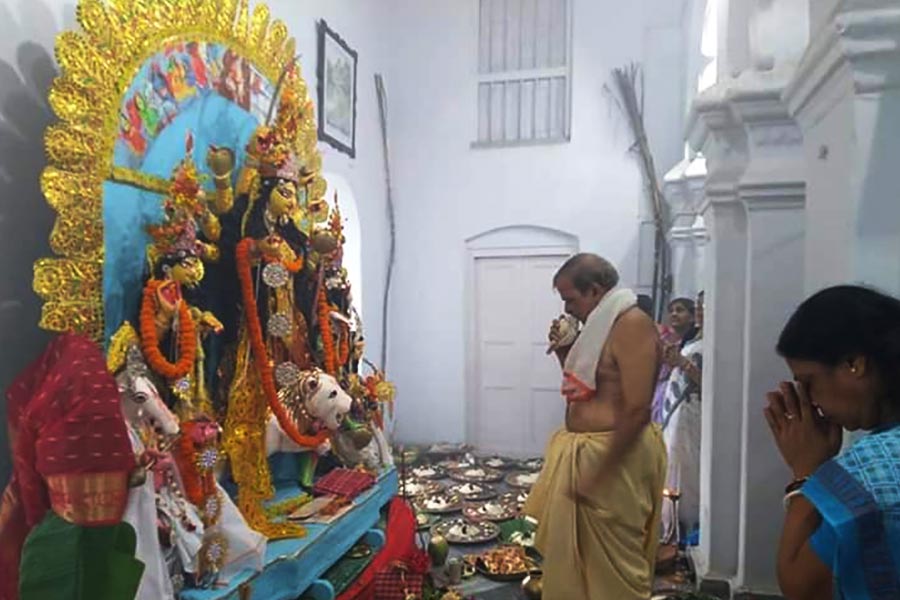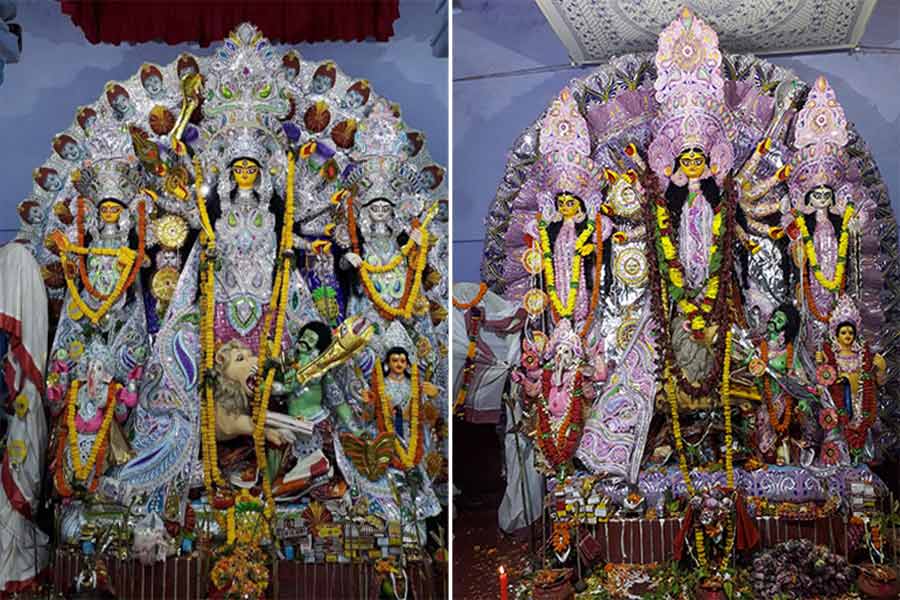The first Indian recipient of the National Order of the Legion of Honour — the highest French order of merit made famous in the country by Satyajit Ray and later received by Soumitra Chatterjee as well — was a self-made man, a successful businessman, a philanthropist but always remained a humble man. Not surprising then that the Durga puja at his family home in Chandannagar (or Chandernagore) is devoid of pomp and show.
Durga Charan Rakshit — the man
Strand, the tree-lined popular pathway along the Ganga in Chandannagar, boasts a gateway with floral motifs, wreaths, Corinthian pillars and even elephant heads that leads to a ghat and right in the middle of this entry point are a few lines written in French declaring that the structure was erected in memory of Mr. Durgachorone Roquitte, who was Chevalier (Knight) of the Legion of Honour. It goes on to state that Roquitte (or Rakshit) was born in Chandannagar
on September 26, 1841, and died in Benares on August 27, 1898. His son Shamachorone Roquitte donated this kiosk aka memorial in 1921. The ghat is also named after him.
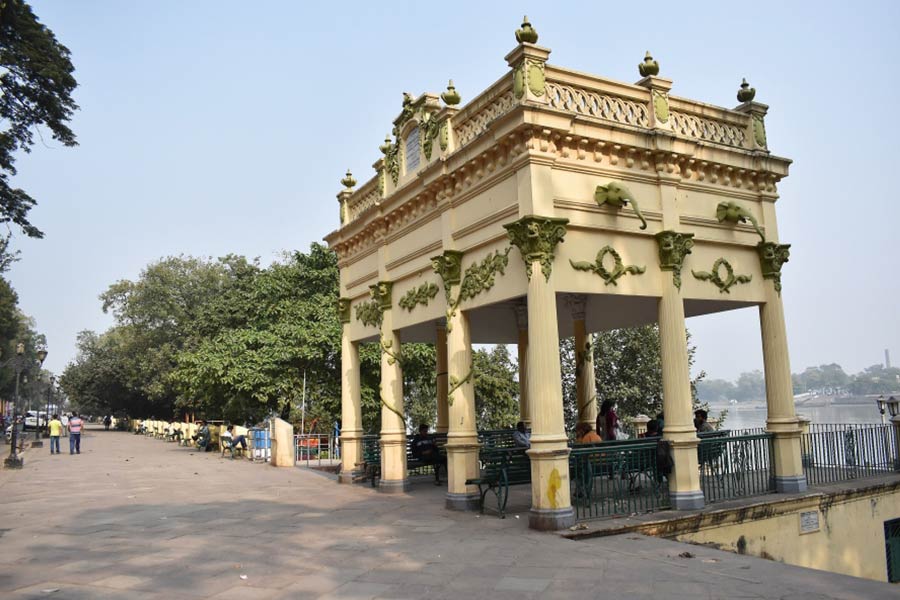
The Durga Charan Rakshit Memorial at the Chandannagar Strand, built in 1921 by his son Wikimedia Commons
The National Order of the Legion of Honour is the highest French order of merit, both military and civil. It comprises five degrees of increasing distinction — Chevalier (Knight), Officier (Officer), Commandeur (Commander), Grand officier (Grand Officer) and Grand-croix (Grand Cross).
Durga Charan Rakshit (Anglicised version: Durgachorone Roquitte) was the first Indian to receive this honour. From losing his father at a tender age of 10 to getting bankrupt at a young age, Durga Charan Rakshit turned the tide in his favour and amassed great wealth with his business of import and export. Rakshit ’s trade was not limited to the French; he also conducted trade with Malaysia, Yangon (Rangoon), Trinidad, Hong Kong, Jamaica, Egypt and Mauritius.
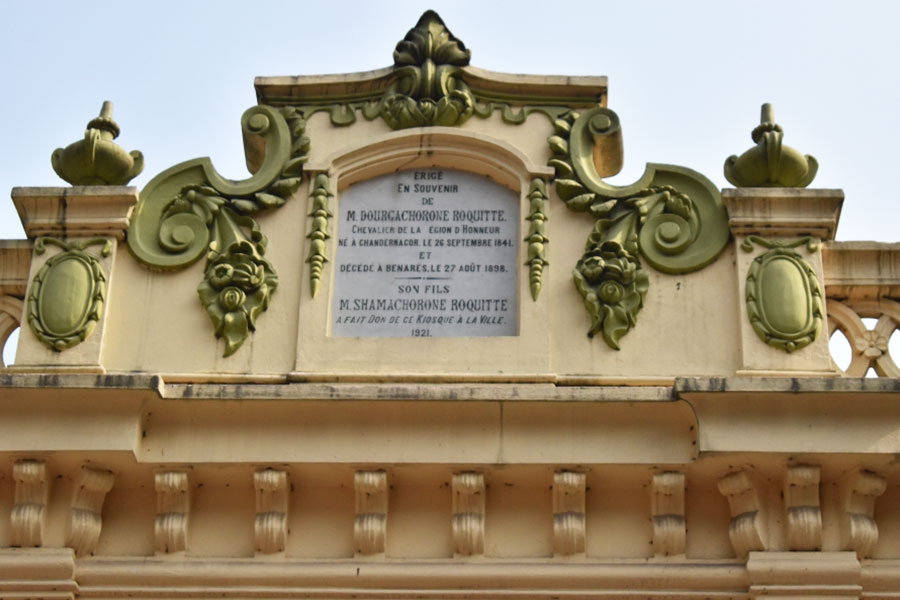
The engraving in French on the memorial mentioning Durga Charan Rakshit as the receiver of the ‘Chevalier de la Légion d'Honneur’ Wikimedia Commons
Other than being a successful businessman, Rakshit was a philanthropist too. He opened free schools, free medical stores, supplied free food grains and even sponsored pilgrimage. He was appointed mayor of the city and a judge in the local court. He was honoured by the French with several titles and finally the coveted ‘Chevalier de la Légion d'Honneur’ on June 6, 1896. He died two years after receiving the honour.
Durga Puja at Rakshit house
The puja in the Rakshit home is as humble as the man. The present house is part of a sprawling premises with statues and a garden. Some members of the family took on the Anglicized version of the surname while some carried on with the Indian version, as evident from their names in the letterbox outside the house.
The Rakshits originated from Bhandarhati near Dhaniakhali. Durga puja was started on these premises by Govinda Chandra Rakshit, father of Durgacharan Rakshit. It is not known exactly when the puja started here, but it started in a small house which still exists in the corner of the main building. It is believed that Govinda Chandra Rakshit and his wife had prayed to Durga for a son. When finally the couple were blessed with a son, they named him Durga Charan after the goddess. After Durga Charan, the names of all male members in the family carried the suffix Charan.

The portico of Durga Charan Rakshit's house, which leads to the ‘thakur dalan’ Hooghly Heritage
The Durga puja began around 1841, so one can assume that the puja is over 180 years old.
When Durgacharan Rakshit started gaining prosperity in life, he first built an extension of the family house. Amiya Charan, a senior member of the Rakshit family, recounts that the Durga dalan was constructed later by Durgacharan. After his death in 1898, his elder son Shyama Charan extended the thakur dalan with some help from the younger son Tarini Charan. The Durga dalan is just a three-arched affair with two windows on its rear. The courtyard in front of it is rather narrow and surrounded by balconies on the floor above it, which were probably built as a viewing platform for the women of the house.
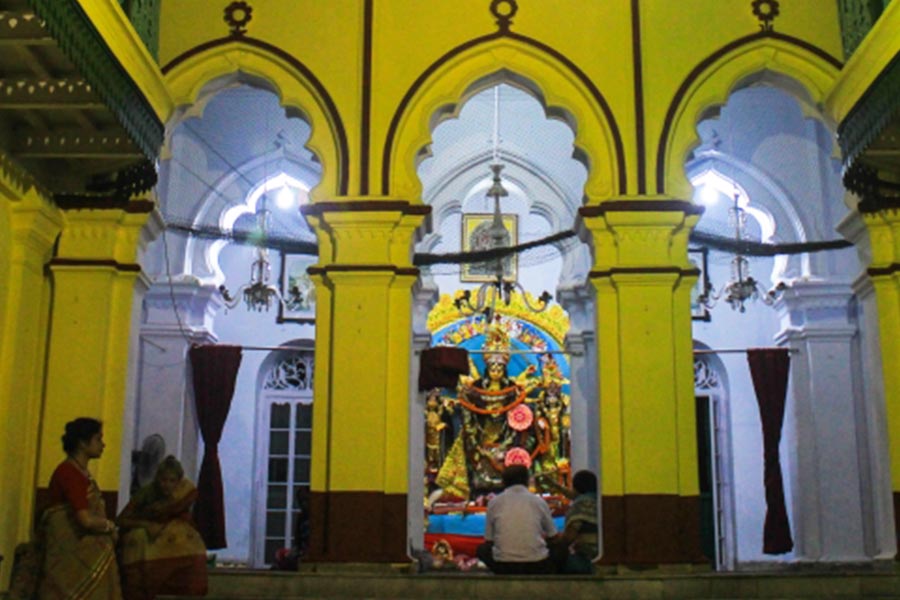
The three-arched ‘thakur dalan’ Shrabanti Mitra
Amiya Charan said the expenses of the puja are currently borne by a debottar trust under the name of family deity Sridhar Jiu (Narayan Shila), of which he is a member. The puja room of Sridhar Jiu is located on the first floor of the house.
Durga here is decked out in bright golden foils though there was a time when shola decorations were used. Amiya Charan said efforts are on to revive the shola decorations. The goddess is adorned with gold and silver jewellery, some of which are several generations old. The crown of the goddess is made of silver. The weapons of the deities are made of brass and date back to many years.
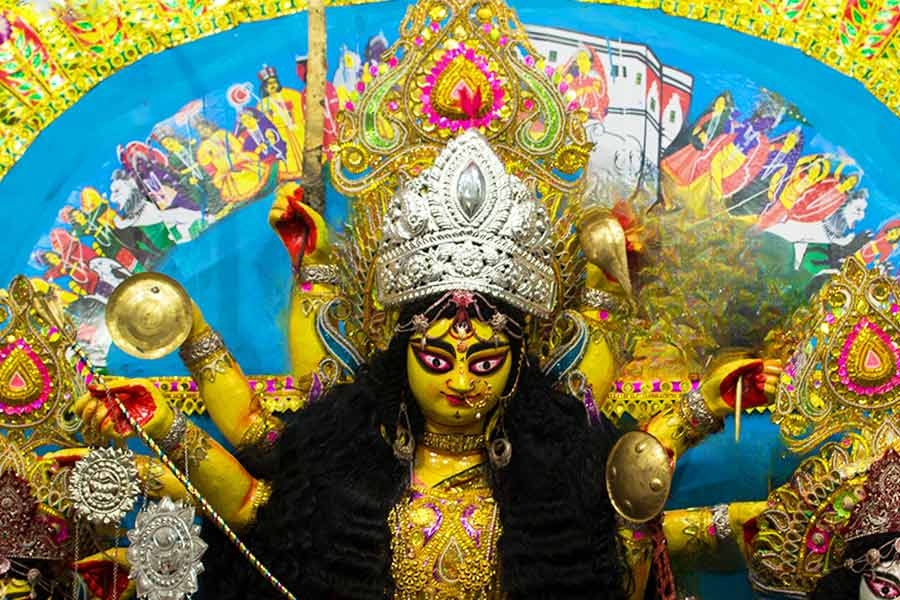
The goddess is adorned with gold and silver jewellery, some of which are several generations old Hooghly Heritage
Kathamo pujo of the deity is performed on the day of Janmastami. A new kathamo or frame is built for the foddess every year. Apart from Durga, the Rakshit family celebrates Saraswati, Ganesh, Kartik and Lakshmi pujas at various times of the year.
Bodhon takes place on Sashthi. Navapatrika rituals are conducted at the nearby ghat of Hooghly. A huge umbrella made of silver accompanies the navapatrika.
The Rakshit family members remain on a vegetarian diet from Panchami to Dashami morning. On Dashami, they consume fish from a local pond before the women participate in the boron rituals.
The food offerings to the goddess include luchi, an array of sweets, including narkel naru, sweets made of kheer and fried sweets. Several devotees visiting the puja also bring sweets as offerings.
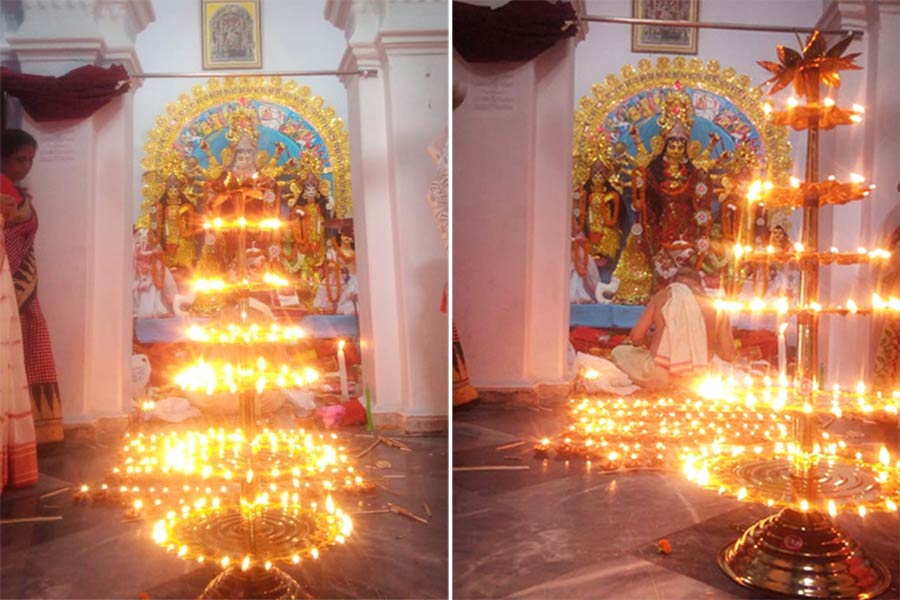
Sandhi Puja at Durga Charan Rakshit’s house Rakshit Family
The most interesting part of the food offerings to Durga is that adjacent to the thakur dalan there is a small room known as naibedya ghar. Huge quantities of rice are bought from the market for making chaler naibedya (rice offerings) and several barkosh (wooden plates) and brass plates are used to arrange the offerings. The amount of rice naibedya is so huge that a separate room is needed to prepare it.
Sandhi puja is a traditional affair with earthen lamps as well as a lamp stand. After Sandhi puja, 10 to 12 women conduct dhuno porano rituals. Kumari puja is performed with a single kumari on Ashtami.

Kumari Puja Rakshit Family
Sindoor khela is a simple affair on Dashami. After sindoor khela and boron, members of the family perform kanakanjali rituals.
Earlier, the deities would be carried to the Ganga for immersion, but shortage of people has led to the deities being carried for immersion in a vehicle.
